How Apartment Therapy, The New Yorker, and the NBA create personalized content experiences
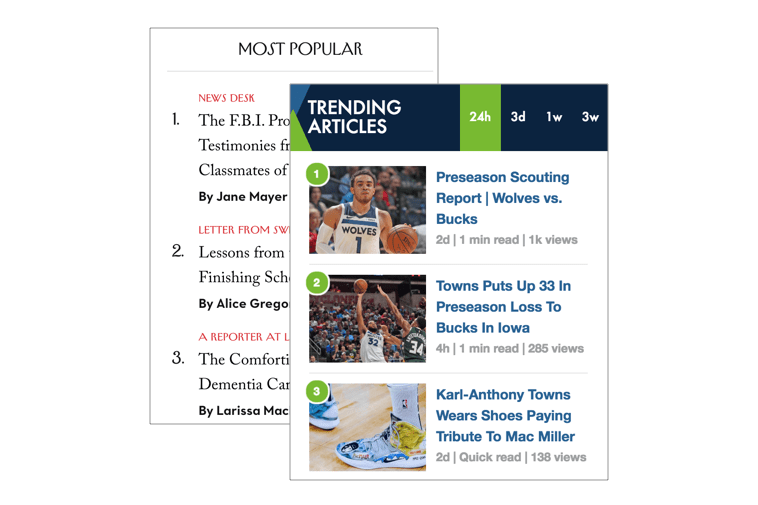
Audience development teams spend countless hours optimizing content for SEO and engaging audiences on Facebook or Twitter. All in the name of driving readership to your site. But once the audience gets there, then what? How can you optimize that audience relationship?
NBA team the Minnesota Timberwolves tackled this challenge by personalizing content to keep their fans interested. “Our goal was to increase fan interaction once they came to our site, and give them a glimpse into what content is truly trending amongst the fanbase,” said Sam Flood, Manager of Digital Innovation. With Parse.ly’s content personalization, they were able to get a trending articles recommendation widget live on their site in less than two days.

The Timberwolves saw immediate results, even though they began personalizing content during the off-season. “We’ve seen a large amount of fan interaction with it and are excited to see what in-season traffic looks like,” said Flood.
With 23% of traffic to articles in Parse.ly’s network coming from other articles, homepages, and section pages on the same site, content creators and audience developers can make a massive impact by tailoring content to keep audiences interested. Here’s how media companies have made personalization not just part of their technology stack, but part of their content strategy.
Recommend the most-read content at key moments on-site
Homepages are an incredibly important engagement points for a media site’s most loyal readers. On average, 11% of views to articles come from homepage traffic and 80% of the people who visit a homepage are return visitors. When someone visits a homepage, they’re asking a source they trust, “What should I be reading or watching?”
Slate and Iceland’s RUV answer this question with sections highlighting the most read content on their site.
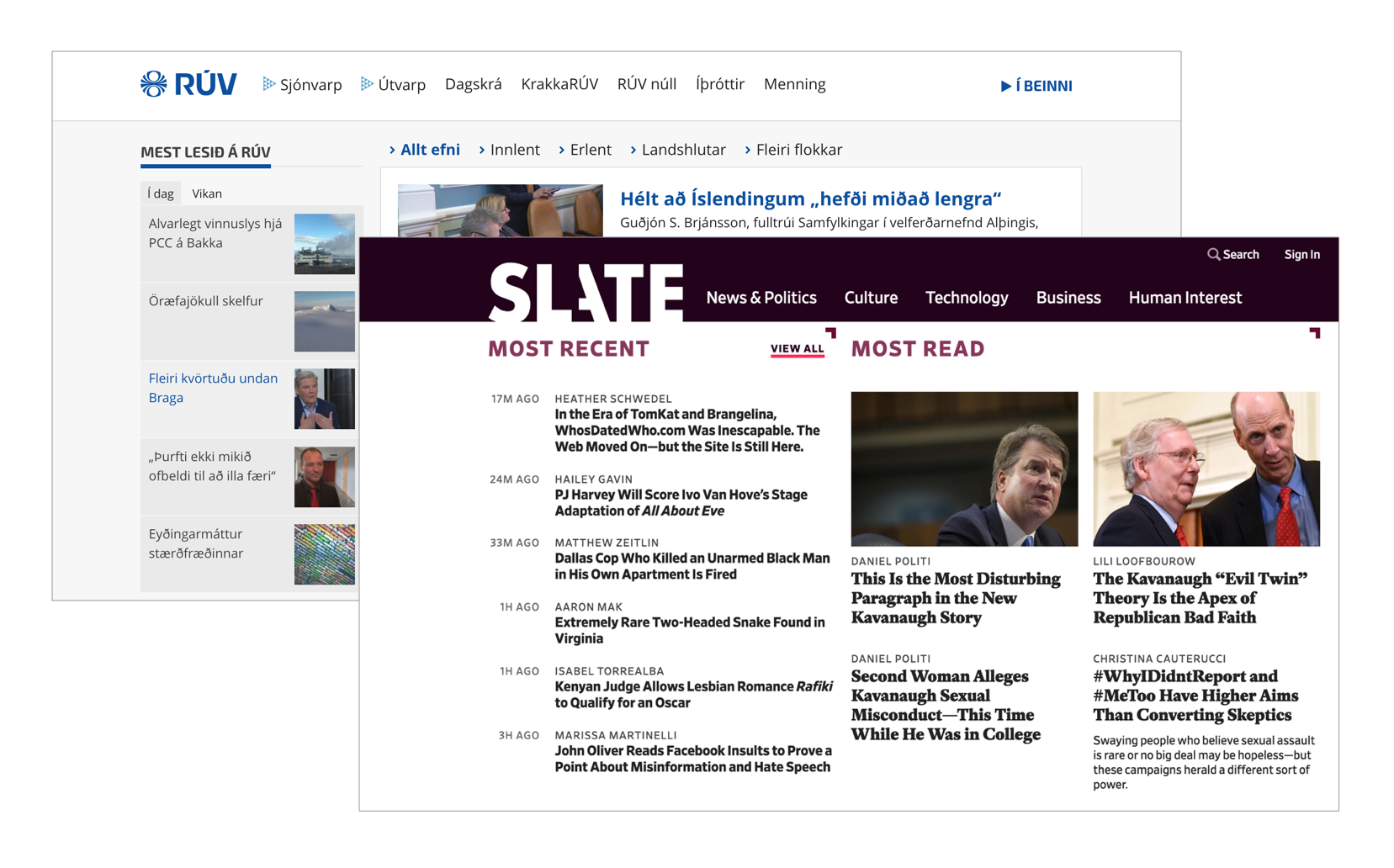
Meanwhile, a visitor who landed on an article from somewhere other than the homepage may be in a different mindset. If they’re a first-time or infrequent visitor, this is your chance to surface more interesting content that keeps your site top of mind the next time they want to know what’s happening in the world of movies, finance, or the daily news.
Experiment with what you recommend
What qualifies as “interesting” to a reader depends, and media sites often experiment with suggested content based on different criteria. The New Yorker, for example, shows the most popular content in the right rail and content from the same section at the bottom of articles.
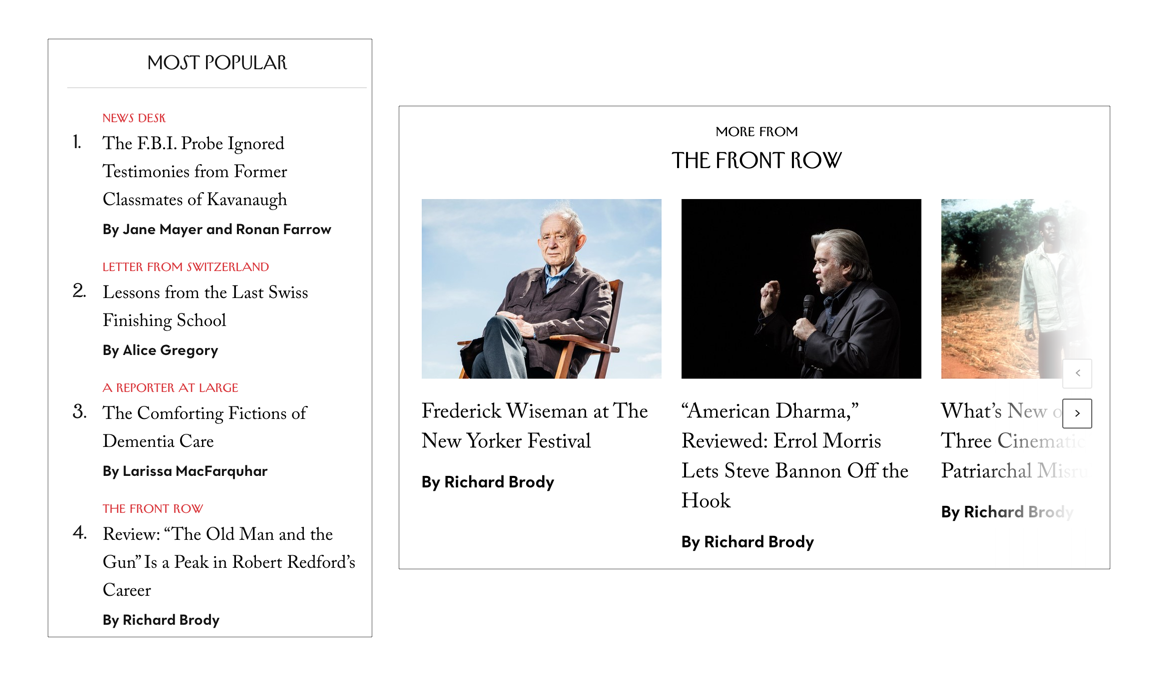
Vogue surfaces related content using infinite scroll. Finish one article, and a relevant article will appear below.
Here are some more ideas you can test:
- Surface most shared articles on mobile to keep your millennial audience engaged.
- Encourage subscriptions by showing the articles most popular with returning visitors.
- Enable 1-1 personalization by showing content similar to what a visitor read or watched in the past.
- Foster reader relationships with journalists by recommending more of their work.
- Recommend highly visual work (like slideshows) to visitors referred by Pinterest.
Utilize search as a vehicle for recommending content
Some visitors may come to your site with a particular topic in mind, so making sure they’re able to access it right away should be a top priority. However, Google makes this look easier than it actually is to develop on your own.
Shortlist and CoinDesk indulge their readers’ curiosity by putting search front and center (or slightly to the right, in CoinDesk’s case.) In this prominent position, search becomes another piece of real estate for recommending content—one that’s often underused and forgotten about.
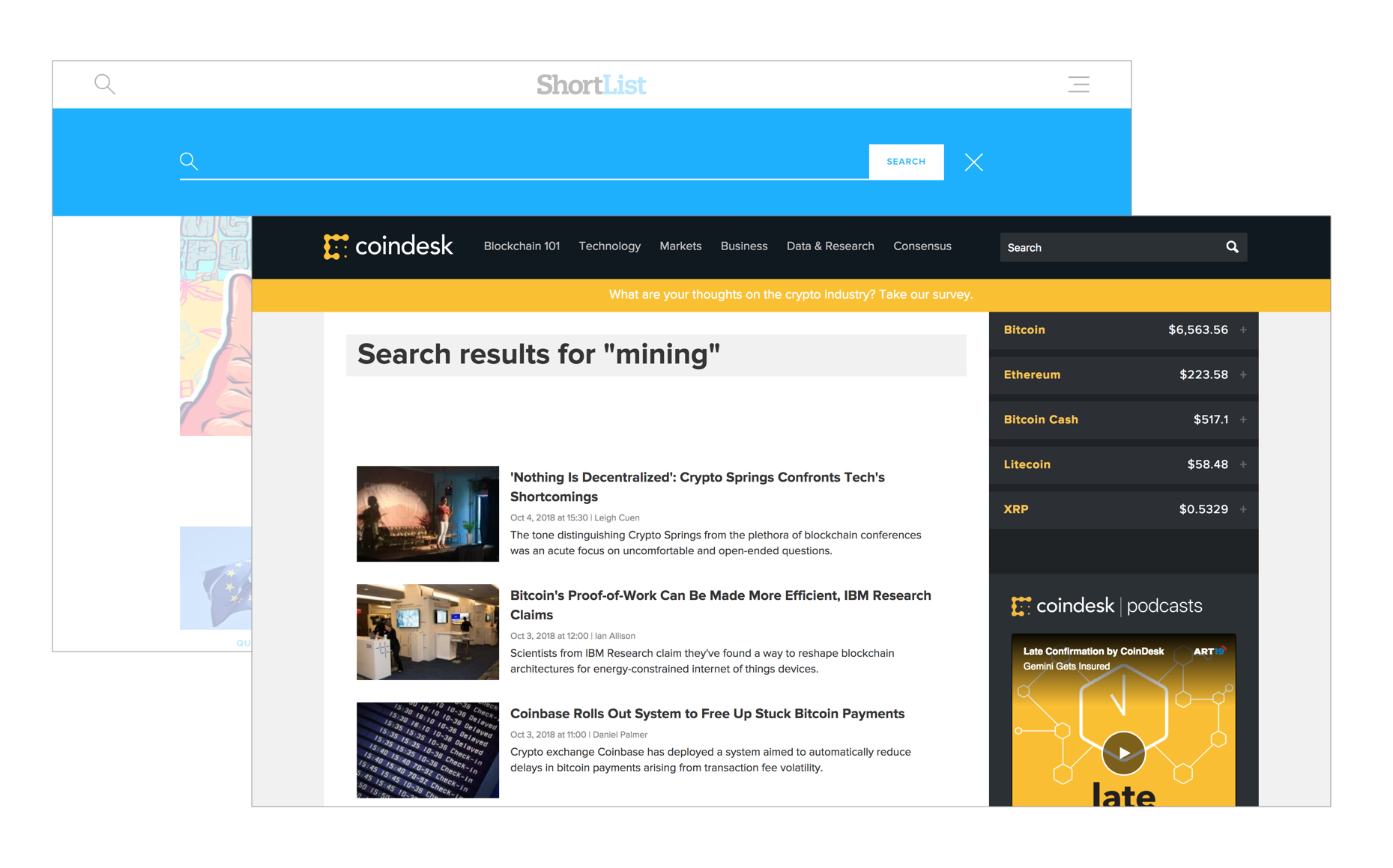
Focusing on search makes sense especially for sites that cover specific verticals. CoinDesk expects people to visit their site because they want to learn about blockchain. A prominent and smooth search experience makes it easy for their readers self-select and go down rabbit holes of research.
Off-site personalized content: show readers what they missed in tailored newsletters
Other owned and operated channels like email offer a ton of opportunities for personalized content. Using Parse.ly and PostUp, Apartment Therapy was able to automatically curate newsletters based on what subscribers previously read.
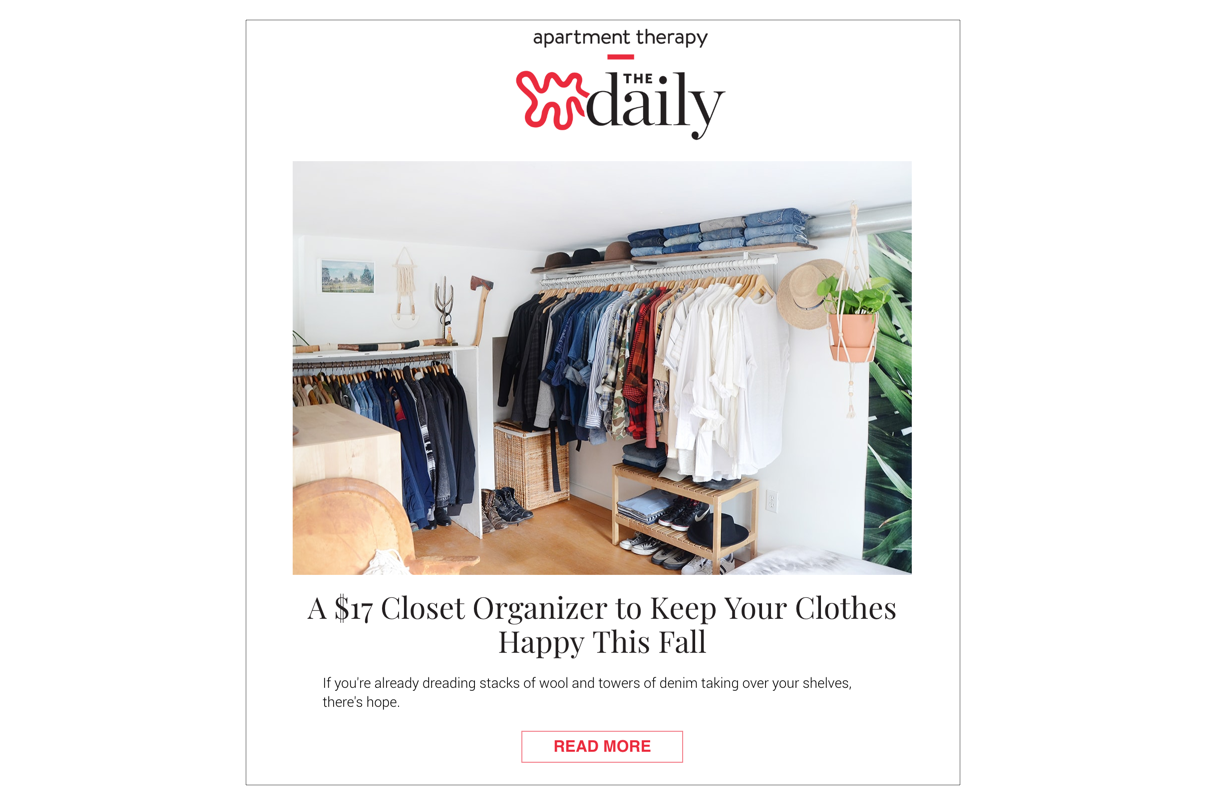
Instead of a one-size-fits all roundup, subscribers receive emails with articles relevant to their interests: someone who’s been reading up on bathroom renovations might get tips for de-cluttering her counter. To keep things fresh, Apartment Therapy also skips sending articles subscribers have already read.
Deliver customized experiences that exceed your audience’s expectations
In a world where algorithms and reader habits can change overnight, focusing on creating personalized experiences on the channels you do control is more important than ever. Parse.ly can help you get there, just like we helped all of our clients in the examples above.
Learn more about Parse.ly’s solutions for content personalization.
(Are you a Parse.ly client interested in content personalization? Reach out to your account manager or support@parsely.com.)